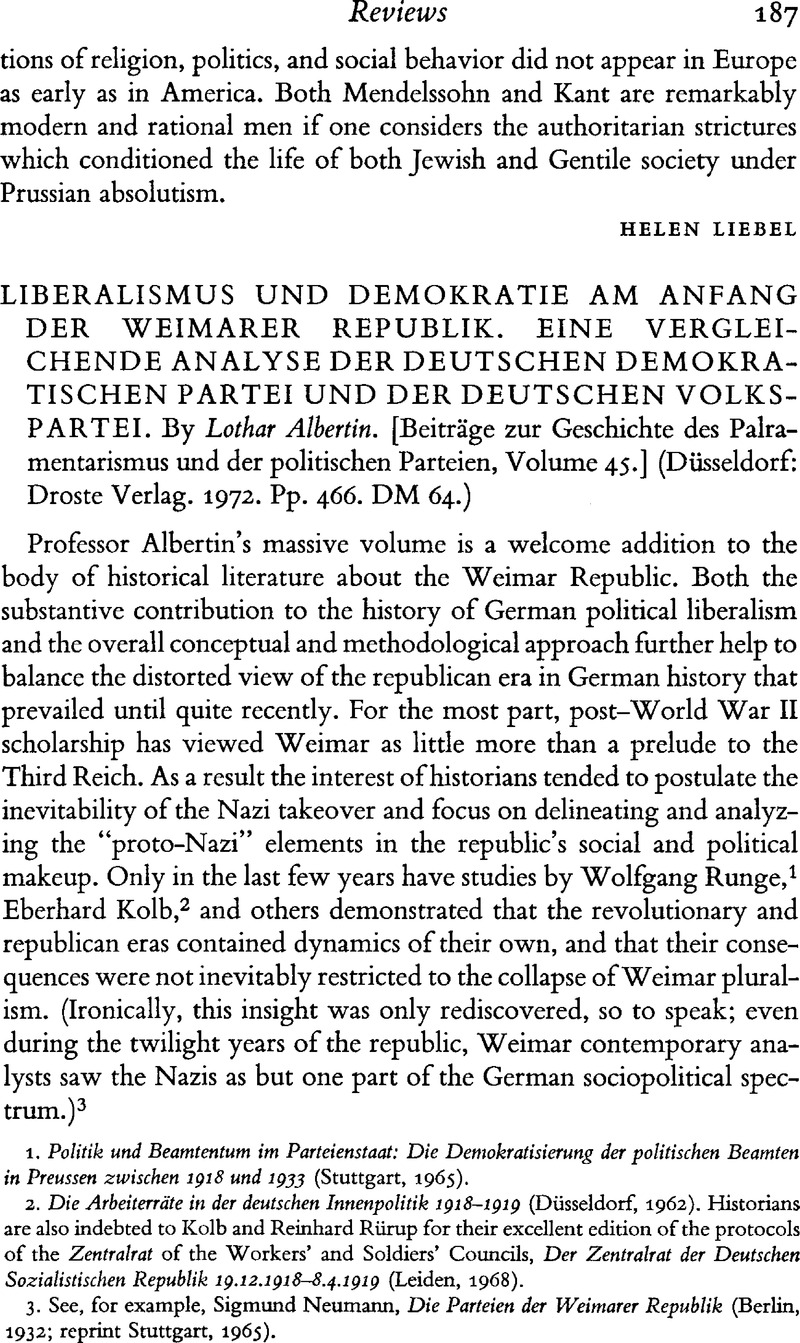No CrossRef data available.
Published online by Cambridge University Press: 16 December 2008

1. Politik und Beamtentum im Parteienstaat: Die Demokratisierung der politischen Beamten in Preussen zwischen 1918 und 1933 (Stuttgart, 1965).Google Scholar
2. Die Arbeiterräte in der deutschen Innenpolitik 1918–1919 (Düsseldorf, 1962).Google Scholar Historians are also indebted to Kolb and Reinhard Rürup for their excellent edition of the protocols of the Zentralrat of the Workers’ and Soldiers’ Councils, Der Zentralrat der Deutschen Sozialistischen Republik 19.12.1918–8.4.1919 (Leiden, 1968).Google Scholar
3. See, for example, Neumann, Sigmund, Die Parteien der Weimarer Republik (Berlin, 1932; reprint Stuttgart, 1965).Google Scholar
4. The term Mittelstand is untranslatable, unsatisfactory, and unavoidable. It originally included the members of the preindustrial urban bourgeoisie—independent businessmen, artisans, merchants, retailers, and the professions. After industrialization these groups came to be called the old Mittelstand, while the holders of the salaried, white-collar positions associated with large-scale industrial enterprises and bureaucratized service organizations (e.g., low- and middle-level executives, laboratory technicians, secretaries) were grouped under the label “new Mittelstand.” During the Weimar Republic Mittelstand usually included both groups, though it should be recognized that political power in the Mittelstand organizations continued to remain in the hands of old Mittelstandler, particularly the retailers and artisans. For a good discussion of the problem see Winkler, Heinrich August, Mittelstand, Demokratie und Nationalsozialismus: Die politischeEntwicklung von Handwerk und Kleinhandel in der Weimarer Republik (Cologne, 1972).Google Scholar
5. E.g., Ringer, Fritz, The Decline of the German Mandarins (Cambridge, Mass., 1969), andGoogle ScholarLebovics, Herman, Social Conservatism and the Middle Classes in Germany, 1914–1933 (Princeton, N.J., 1969).Google Scholar
6. E.g., Becker, Werner, Demokratie des Sozialen Rechts: Die politische Haltung der Frankfurter Zeitung, der Vossischen Zeitung und des Berliner Tageblattes 1918–1924 (Gottingen, 1971).Google Scholar
7. See Grosser, Dieter, Vom monarchischen Konstitutionalismus zur parlatnentarischen Demokratie: Die Verfassungspolitik der deutschen Parteien im letzten Jahrzehnt des Kaiserreiches (The Hague, 1970).Google Scholar